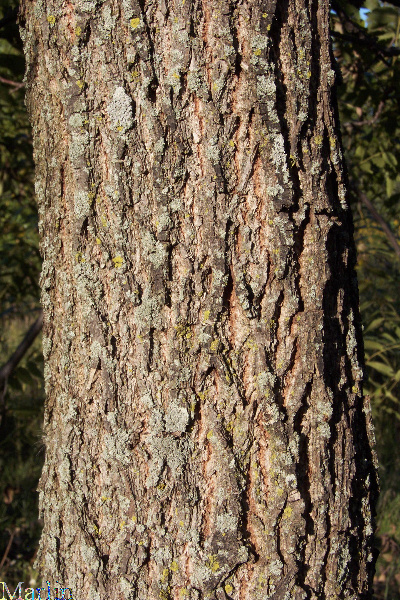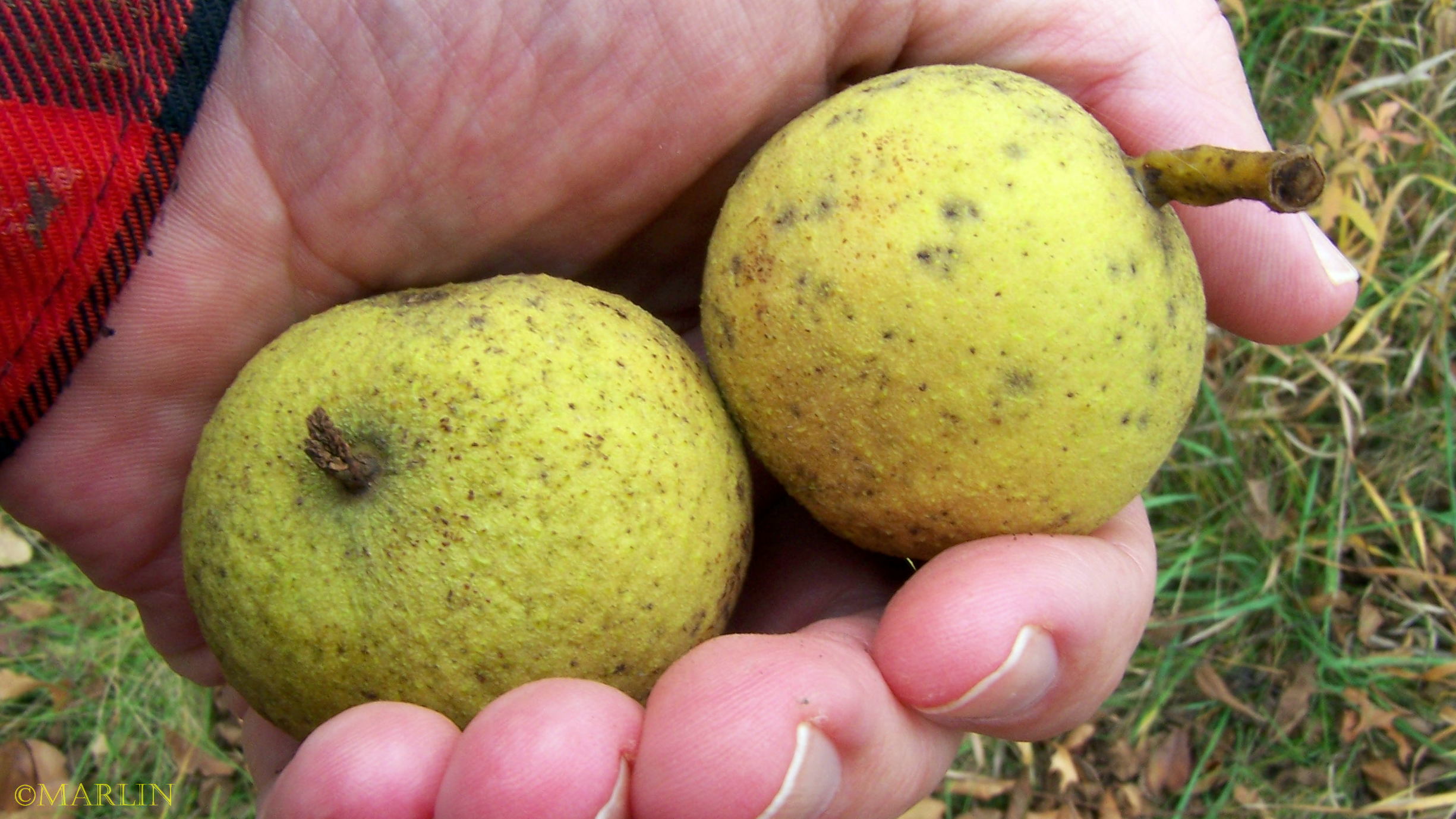Black Walnut – Juglans nigra
Black walnut poses some problems when used in urban landscapes. Although it is long-lived, grows quickly and provides a light, dappled shade, it is prone to wind breakage, and the nuts can be quite a nuisance. The roots of Black Walnut (Juglans nigra L.) and Butternut (Juglans cinerea L.) produce a substance known as juglone (5-hydroxy-alphanapthaquinone), that inhibits the growth of many adjacent plants, including Scots Pine, Birch, Basswood, apple trees, grapes, and hydrangea. This herbicide is contained in the tree’s roots, leaves and nut husks, and the residue remains in the soil for years even after the tree has been removed.
 |
 |
Black Walnut is among the most valuable wood grown commercially in the American Midwest. It has long been highly prized for its beautiful color, tensile strength, durability, machining qualities and dimensional stability. Black walnuts are fast-growing and long-lived, sometimes to over 200 years. These black walnut trees were photographed on bottomlands along the west branch of the DuPage River, near Winfield, Illinois.
Do the squirrels love these trees? Boy, do they. You can hear them skinning the inedible portion of the fruit off to get at the nut – they sound like miniature buzz saws going in the trees. Black walnut fruit is loaded with tannin and will stain your hands, clothing and concrete should you decide to crack nuts on the garage floor.
Tree Encyclopedia | Insects & Spiders


